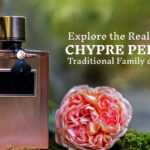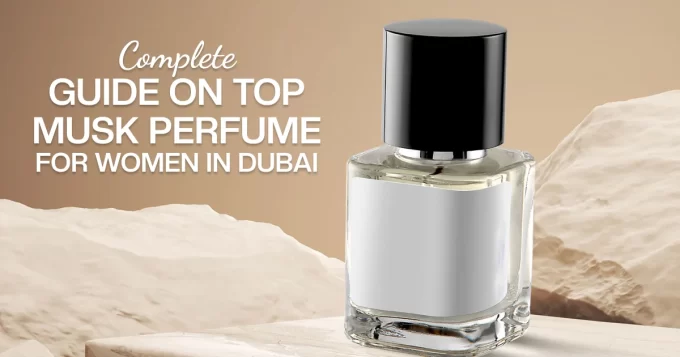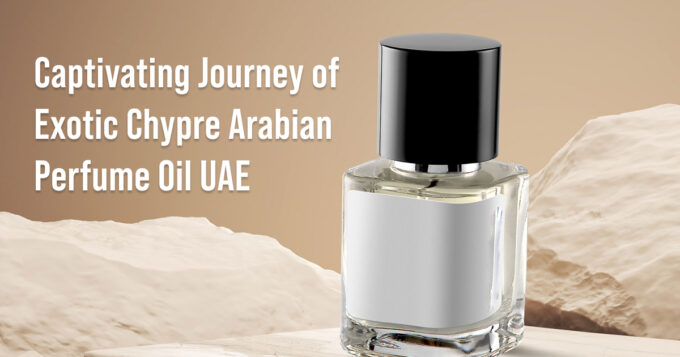The Timeless Art of Chypre Perfume:
Chypre is one of the most iconic fragrance families in perfumery. Rich, earthy, and sophisticated all at once, chypre perfumes have a timeless quality, and they continue to mesmerize the perfume lover’s nose more than a century after they first appeared.
The chypre name (pronounced “sheep-rah”) is French for “Cyprus,” as this scent is said to capture the essence of the fragrant flora found on the Mediterranean island. Chypre is one of the more complex fragrance families with its contrasting notes that are balanced so elegantly and yet together; that is why those desirous of something truly unique may love chypre.
If you are interested in the scent of chypre fragrances and want to learn more about perfumery techniques, then creating your chypre perfume recipe is a thoroughly rewarding experience. In this blog post, we shall trace the history of chypre fragrances, break down the key ingredients that characterize this fragrance family, and guide you through creating your very own chypre-inspired perfume.
History of Chypre Perfumes
The lineage of the chypre family of fragrances goes back as far as ancient times, when the inhabitants of Cyprus combined and used the ionian island’s aromatic products, such as cistus, labdanum, and myrtle, in producing aromatic oils and unguents. However, it wasn’t until 1917 that, according to myth, French famous perfumer François Coty finally unveiled the modern chypre fragrance to the world by launching his revolutionary perfume simply known as “Chypre”.
Revolutionary in its structure, Coty’s creation combined a bright, fresh opening of citrus with a rich, woody, and mossy base of oakmoss, labdanum, and patchouli. Resulting in a fragrance that perfectly balanced freshness with depth in an elegant and enduring scent. The success of Coty’s Chypre gave birth to the whole fragrance family, and decades later, many famous perfumes took their cue, such as Mitsouko by Guerlain, Miss Dior, Aromatics Elixir by Clinique.

Perfume Families. Structure of a Chypre Perfume
Breaking down the chypre structure helps to understand how a chypre perfume recipe can be created. A chypre fragrance, like any perfume, is made up of top, middle, and base notes, but it’s the very blend of contrasting elements that come together in harmony that creates the uniqueness of chypre perfumes.
Citrus Freshness: In general, the top notes of a chypre fragrance will be bright, fresh citrus ingredients. Common ingredients are:
Bergamot (the most traditional citrus note used in chypres).
Lemon
Orange
Neroli
These top notes add freshness for the first impression and contrast with the deeper, richer elements used in the base.
Heart Notes (Floral Elegance): Florals are actually commonly found in the heart of a chypre perfume, endowing it with softness and elegance. Other floral heart notes include:RoseJasmineLily of the ValleyYlang-YlangFor a more complex chypre, additional green or herbal notes can also be added, such as:lavenderherbs-thyme, rosemary, and many others.
Base Notes (Woody and Mossy Depth) The base of any chypre perfume is the actual character. This is where the rich, earthy, woody notes play their part. A classic oakmoss-based chypre is built on: Oakmoss- that note which defines a traditional perfumery chypre Labdanum- the resinous warmth with the leathery amber-like quality Patchouli Vetiver Musk
The base of the oil will provide the longevity and depth of the perfume and should hold fresh top notes to a strong rich base.
How to Make Your Own Chypre Perfume Recipe
Now that we have discussed the structure of a chypre perfume, let’s get to the exciting part: creating your very own custom chypre perfume recipe. While making perfume from scratch is quite the art, it’s, at the same time, creative and deeply personal. Here is a step-by-step guide to walk you through how to start on your journey to making your signature scent:
1. Gather Your Ingredients and Tools
- To DIY your own perfume, you are going to need the following materials:
- Materials for your notes : citrus, floral, woody, mossy, etc
- Perfumery alcohol (or vodka as a substitute)
- Glass droppers and measuring pipettes
- Amber glass bottles for blending and storing your perfume
- Blotter strips for testing your fragrance as you build it
2. Start with the Base Notes
First, create your perfume using your base notes. In a traditional chypre perfume, oakmoss is an absolute must, so I want to start by adding a few drops of oakmoss absolute to my perfume bottle. This I can complement with other base notes, like labdanum, patchouli, and vetiver. A typical percentage for base notes would be about 30-40% of your final composition.
Example:
6 drops of oakmoss
4 drops of labdanum
3 drops of patchouli
2 drops of vetiver
3. Hearth the Heart with Floral and Green Notes
For a good scent, you’re gonna add in the middle heart notes; these are, in essence, the workhorses of most fragrances: they’re introducing your main character of your perfume.
4. For a classic chypre, florals work
Well with rose and jasmine, but feel free to get creative; use other green or herbal notes if you want it to be a bit more contemporary. Use approximately 30-35% of your mix for these middle notes.
Example:
5 drops rose
3 drops jasmine
2 drops ylang-ylang
Add the Bright Top Notes
Your top notes are a final addition that gives the perfume its initial freshness when you first apply the perfume. Although a classic chypre perfume typically contains bergamot, you may add other citrus influences such as lemon or orange for brightness. Use the amount of top notes in your blend at around 20-30%.
Example
5 drops of bergamot
3 drops of lemon
2 drops of neroli
5. Mix and Stand
You pour in all your notes, and then mix the blend well in the bottle, closing and giving a good shake to the perfume. Keep it in a cool, dark place for 1-2 weeks, in which the oils will harmonize, and the fragrance will mature. The maturation process is necessary so that in the final scent, it will be deep and balanced.
6. Try it and Tweak
Wait until the fragrance matures, then test on your skin or blotter strips for how the smell develops. In perfecting the composition, you may want to add a little more of an ingredient or another in the balance of the notes. The beauty of creating your very own perfume is that you could always adjust it to your fancy!
Conclusion: A Personal Touch to Timeless Elegance
It is by creating a personal chypre perfume recipe that one can discover that this legendry fragrance family is indeed timeless, creating something perfectly individualistic. It will be a traditional chypre formula, or perhaps, change it a little bit to bring forth that new creation as a result, bringing this scent as a reflection of personality as well as appreciation for this entire art of perfumery.
With a little imagination and some practice, you can bottle as complex, rich, and alluring a chypre perfume as the master perfumers of old did. So why not begin now and have the fun of wearing a fragrance that you dreamed up your very own, one that tells stories as old and timeless as the Mediterranean breeze it was based upon?












